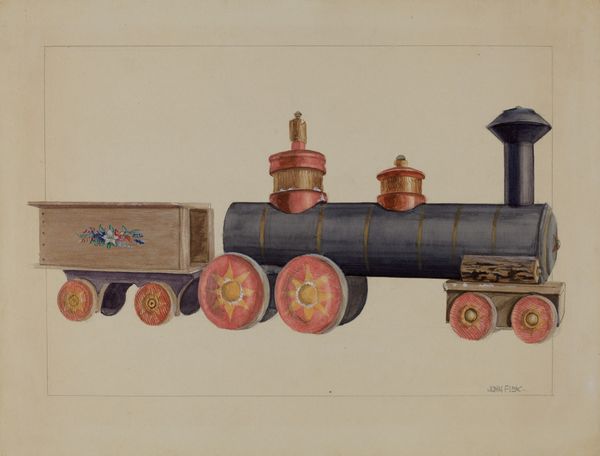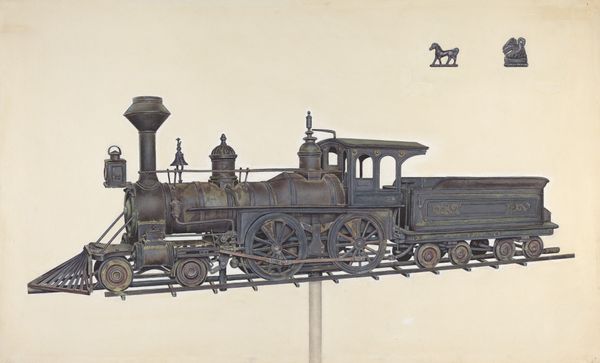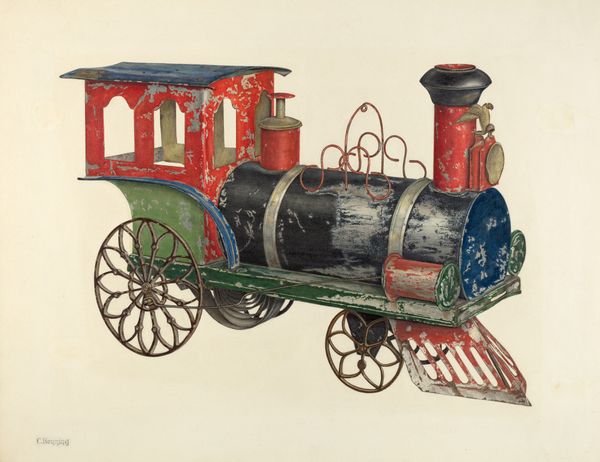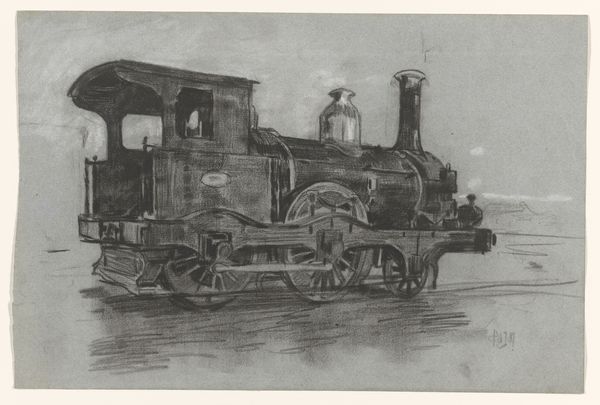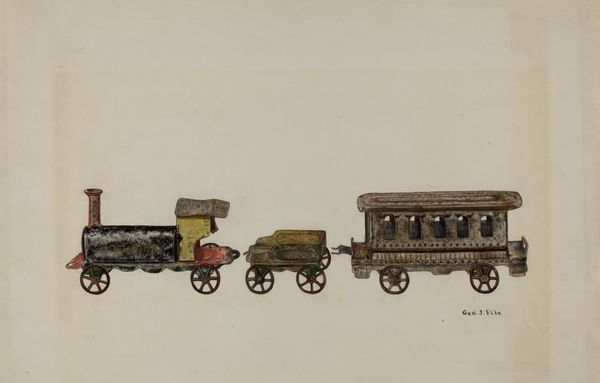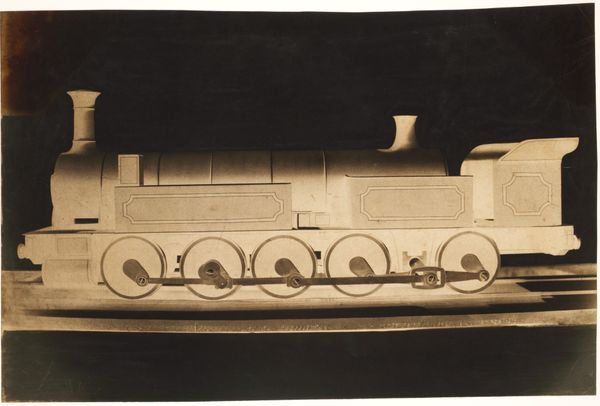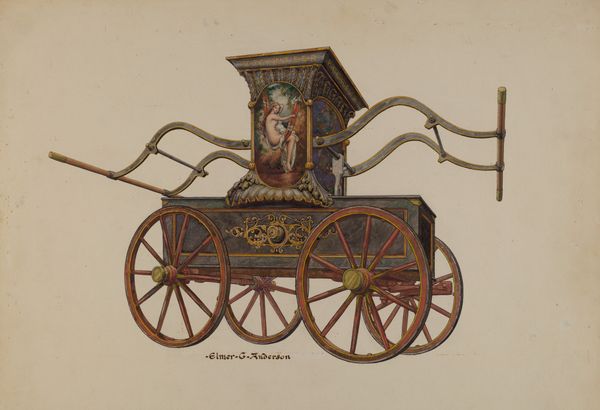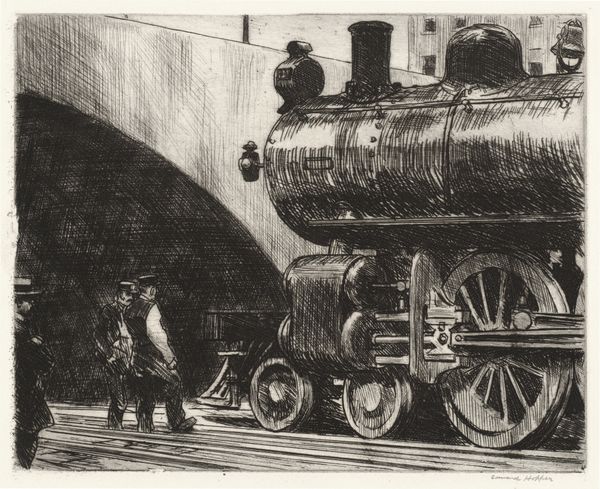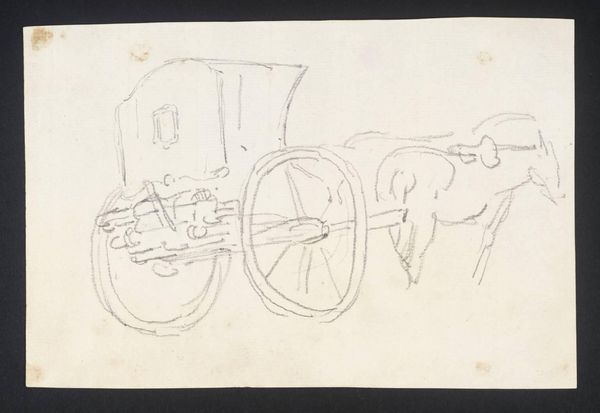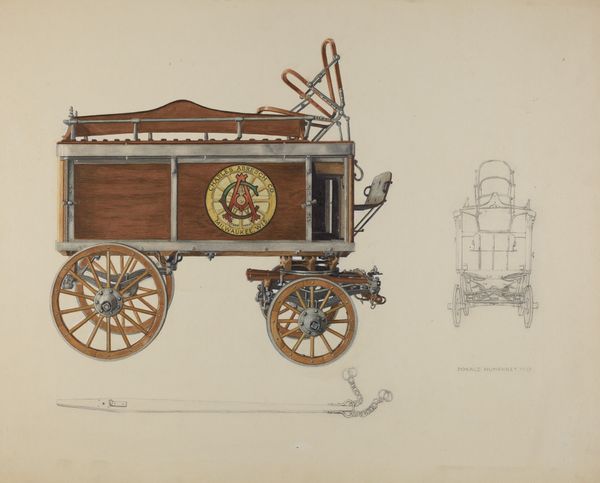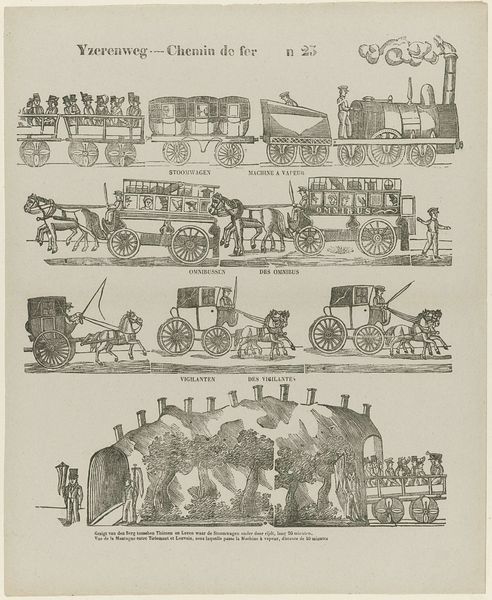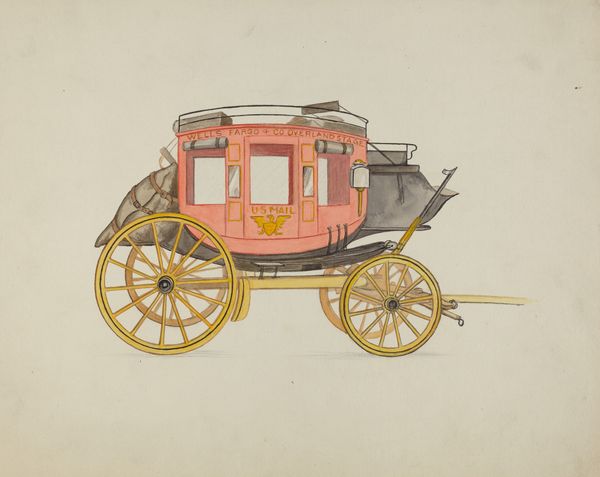
drawing, coloured-pencil, watercolor
#
drawing
#
coloured-pencil
#
watercolor
#
coloured pencil
#
geometric
#
watercolor
Dimensions: overall: 32.6 x 49.9 cm (12 13/16 x 19 5/8 in.) Original IAD Object: 34" long; 7" wide; 9 1/2" high
Copyright: National Gallery of Art: CC0 1.0
Editor: So, here we have Alice Stearns' "Toy Locomotive" from around 1936, rendered with watercolor and colored pencil. It feels almost like an engineering diagram, showcasing the different parts. What strikes you about this piece? Curator: It's interesting to consider the means of production, even in representing a "toy." Stearns chooses watercolor and colored pencil, accessible and perhaps even domestic materials. Was this drawing commissioned, or a personal exercise? This speaks volumes about the value placed on manufacturing, or perhaps a desire to elevate craft through rendering it in the aesthetic of ‘high art’. The geometric precision combined with delicate watercolor washes reflects both industrial and artistic labour, how are these interwoven, or intentionally challenged? Editor: That’s fascinating. I hadn’t thought about the social context of the materials themselves. What do you make of the subject being a toy? Curator: Toys themselves are commodities, objects produced through labor and intended for consumption, usually by children. The locomotive, in particular, embodies industrial progress and the movement of goods, a kind of micro-version of capitalist engines in society at large. We should be asking: What kind of consumption is Alice Stearns hoping to instill within her audience? What did such materials reflect of the larger economic landscape and means of social mobility during the period of its making? Editor: So the image is more than just a pretty picture of a toy train; it's connected to ideas about production, labour, and consumption. I’ll definitely think differently about "everyday" images moving forward. Curator: Exactly. Art isn’t made in a vacuum, so by centering our investigations around historical context and production value we are challenging the boundary of high art and, as you say, these so called everyday images.
Comments
No comments
Be the first to comment and join the conversation on the ultimate creative platform.
